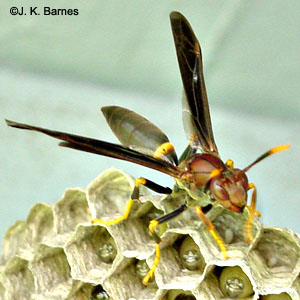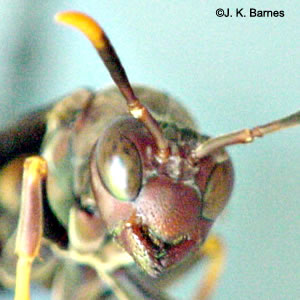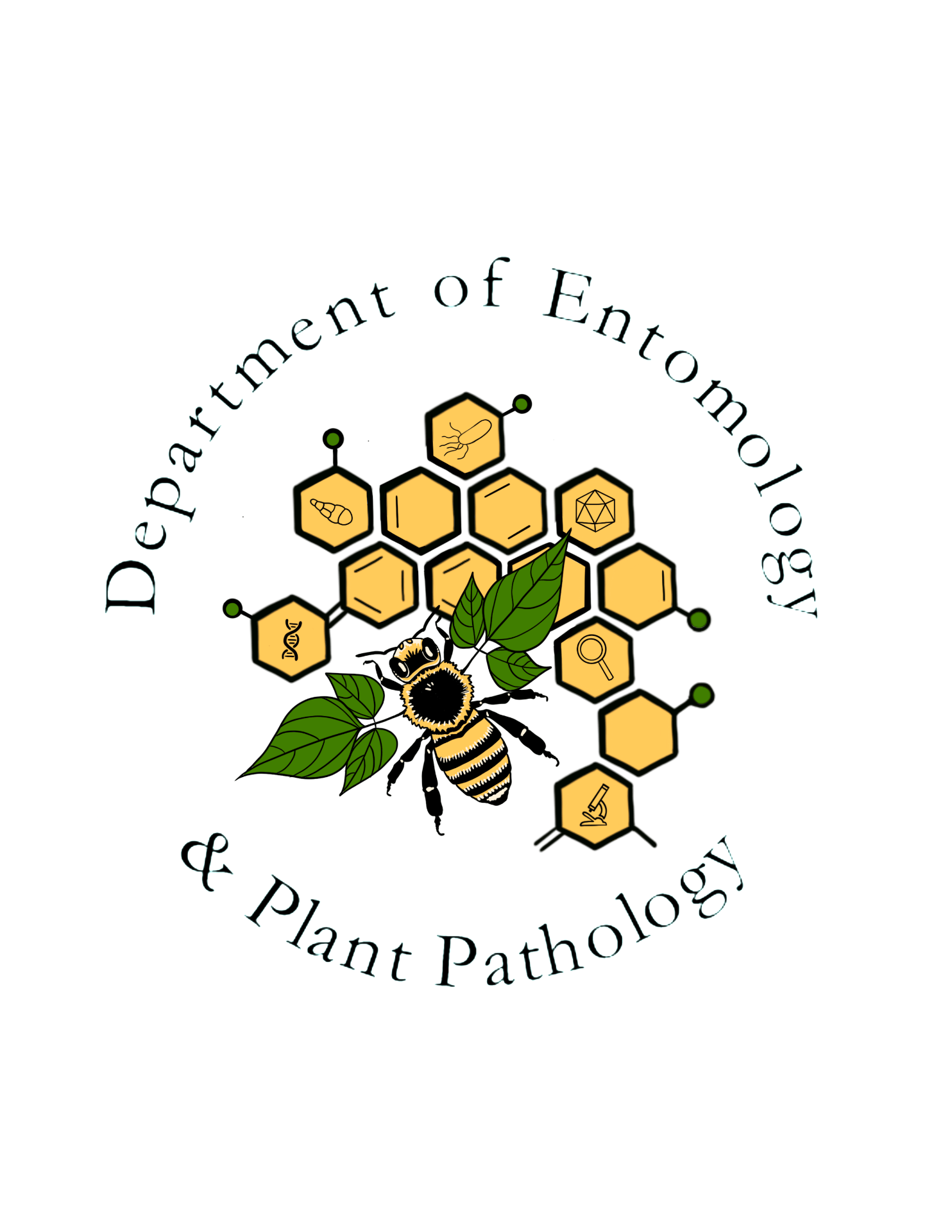Ringed paper wasp
Order: Hymenoptera
Family: Vespidae
Genus and species: Polistes annularis (Linnaeus)

Polistes is a cosmopolitan genus of social wasps with more than 200 species worldwide. Fewer than 10 species are likely to occur in Arkansas, but they are a conspicuous part of our insect fauna. They are known as paper wasps because they build water-resistant papery nests by gathering fibers from dead wood and plant stems, which they mix with saliva. The nest has open combs with cells for brood rearing and a constricted stalk that anchors it in a protected place such as the underside of a rocky ledge, the eaves of a house, or the underside of a deck. The wasps secrete a chemical that repels ants. They spread it around the base of the anchor to prevent the loss of eggs or brood.
Polistes annularis is a common Arkansas species. Individuals from northern areas of the United States have a black thorax with rust-red markings. Individuals from southern areas, including Arkansas, have a rust-red thorax with black markings. All individuals have a red face. This species can be distinguished from other Arkansas species by the following combination of characters: apical antennal segments yellow-orange, contrasting with black basal segments; head lacking conspicuous yellow markings; abdomen black in ground color, with a narrow, yellow ring on the apparent first segment. P. annularis occurs from New York south to Florida and west to South Dakota and Texas.
P. annularis females select a new nest site every year. They never use the same nest twice. Nests are founded in spring, usually late April and early May. Ringed paper wasps often form aggregations of nests. Workers prey on moths, butterflies, and other insects. The vast majority of prey are caterpillars, especially Noctuidae. Unlike other Polistes species, they usually take their prey from wooded areas, rather than open fields. Adults frequently collect honeydew, which they sometimes feed to young larvae. Older larvae are fed insect prey. These wasps have also been observed storing honey during autumn in order to facilitate their survival in colder months.

